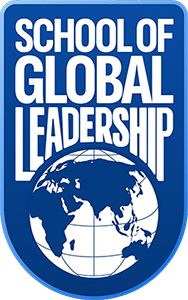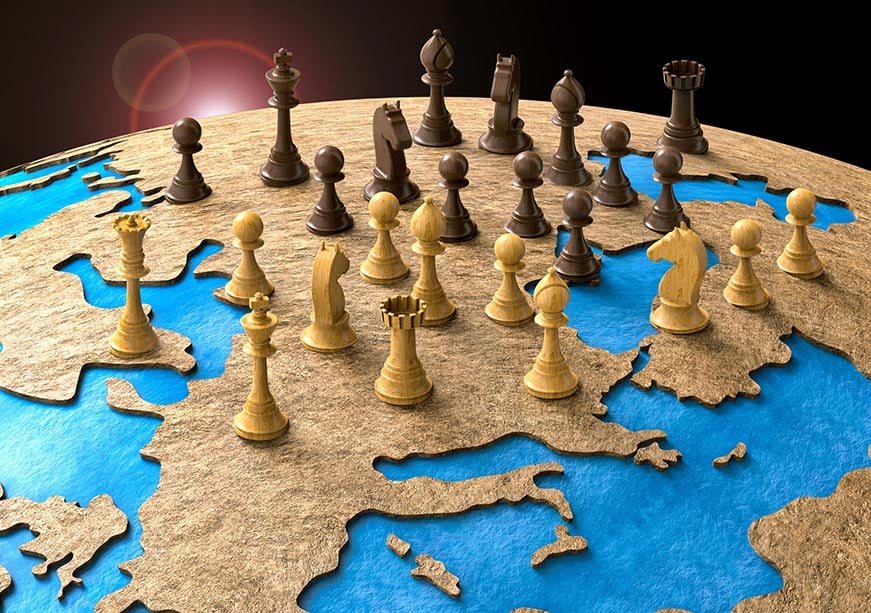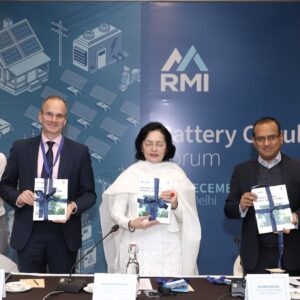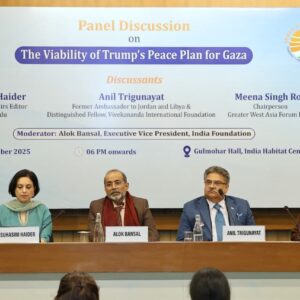In the post-COVID era, three conflicts have set in motion the process of shifting alliances: The Russia-Ukraine War, the Israel-Iran War, and the brief four-day India-Pakistan War.
The Russia-Ukraine war, which is still ongoing, started on 24 February 2022, when Russia launched a full-scale invasion of Ukraine. However, the conflict can be traced back to 2014, when Russia annexed Crimea, and fighting erupted in eastern Ukraine between Ukrainian forces and Russian-backed separatists in the Donbas region.
Crimea has a fascinating history. It was a part of the Ottoman Empire till its annexation by the Russian Empress Catherine the Great in 1783, following the Russo-Turkish Wars. In the mid-19th century (1853–56), Britain, France, and the Ottoman Empire fought and defeated the Russians in Crimea. Crimea, however, remained under Russian control and increased in strategic importance, with Sevastopol established as the base of the Black Sea Fleet. Following the 1917 Russian Revolution, Crimea was established as the Crimean Autonomous Soviet Socialist Republic within the Soviet Union in 1921. It was occupied for a brief period by Nazi Germany from 1941 to 44. In 1945, after the end of World War II, Crimea’s autonomy was abolished, and it became the Crimean Oblast of the Russian Soviet Federative Socialist Republic (RSFSR). In 1954, on administrative grounds, Nikita Khrushchev transferred Crimea from the RSFSR to the Ukrainian Soviet Socialist Republic. After the collapse of the USSR in 1991, Crimea became part of independent Ukraine, though with a majority ethnic Russian population and continued presence of Russia’s Black Sea Fleet in Sevastopol. Disputes over Crimea simmered until 2014, when Russia annexed it following Ukraine’s political upheaval.
The Russia-Ukraine war is now into its fourth year. Whether US President Trump’s efforts lead to lasting peace or not, the conflict is unlikely to persist much longer, as fatigue has set in among the leading players and their supporters. However, conflict termination will likely be on Russian terms, where Russia would retain the territories it has taken, namely the Donbas region and the Zaporizhzhia and Kherson Oblasts. It will also require some form of assurance that Ukraine will not be admitted to NATO. The deal will involve economic assistance to Ukraine. Some European powers may not be pleased with such a deal, but the U.S. could push for it to gain access to Ukraine’s mineral wealth. In April of this year, a joint Reconstruction Investment Fund was established under the Ukraine–United States Mineral Resources Agreement signed between the two countries. Under this agreement, Ukraine will contribute 50% of future revenue from government-owned natural resources, including rare-earth elements, oil, and gas. There is also a proposal that Exxon will re-enter Russia’s Sakhalin-1 and the US will purchase Russian nuclear icebreakers, while Russia will purchase U.S. equipment for Arctic LNG-2.[i] In the final analysis, the deals will be a win-win for the US and Russia and could bring an end to the war.
With trade as leverage, another notable outcome is the agreement reached between Armenia and Azerbaijan in early August at the White House, which commits both parties to ending a four-decade-long hostility. At the centre of the dispute is the Nagorno-Karabakh region. This mountainous enclave is internationally recognised as part of Azerbaijan but is predominantly populated by ethnic Armenians. In the second Nagorno-Karabakh War in September 2020, Azerbaijan emerged victorious, regaining control of the region. Azerbaijan also took the remaining Armenian-held areas of Nagorno-Karabakh in their 2023 offensive. Now, under the deal signed between the two nations, the US has been granted a 99-year lease over the Zangezur Corridor—a narrow strip of land that will serve as a vital trade and energy route to Europe, completely bypassing Tehran. Named the Trump Route for Peace & Prosperity (TRIPP), it secures a direct role for Washington in supervising the flow of Caspian hydrocarbons to Europe, with the US managing rail and road infrastructure, telecom networks, and energy pipelines running through the corridor. US companies will now dominate regional transit for oil, gas, and goods. Essentially, the peace agreement has been established by anchoring US security guarantees, such as the economic-focused initiatives like the Abraham Accords.[ii] This is a notable win for the US and NATO. Tehran, however, loses leverage as its ability to shape energy and trade flows in the Caucasians is degraded.
The Israel-Gaza war, which resulted from the dastardly 7 October 2023 attack on Israeli civilians, is still ongoing. This conflict spilt over into a war between Israel and Iran on 13 June, with Israel launching hundreds of air strikes on Iran’s military and nuclear infrastructure. Several key Iranian leaders were also assassinated at the start of this war. Iran responded with attacks on Israel using missiles and drones. The US entered the conflict on 21 June and struck three Iranian nuclear sites—Natanz, Fordow, and Isfahan. The U.S. brokered a fragile ceasefire that took effect on June 24, 2025. While the war has once again underscored the central role of the US in maintaining peace in the region, it has also highlighted its limitations. Iran has been weakened, and the capabilities of its proxies, Hamas in the Gaza Strip and Hezbollah in Lebanon, are considerably degraded. Iran’s nuclear facilities have also been degraded. However, Iran’s missile and drone attacks on Israel demonstrated reach and resilience, which would impose some form of deterrence. Geo-politically, the situation is still unravelling, but any future peace deal will, in all probability, have a substantial economic commitment to make it durable.
The unfolding events in Syria are also impacting the geopolitical environment in West Asia. The fall of Bashar al-Assad in December 2024 ended the civil war that was raging in Syria. But that has not brought about peace, which remains elusive. Ahmed al-Sharaa, aka Abu Mohammad al-Julani, who heads the transitional government, was an al-Qaeda operative who spent many years in U.S. detention. He founded the al-Nusrat Front in 2011. In 2016, he merged various factions to create the Hay’at Tahrir al-Sham (HTS). After taking over power in Syria, he met with President Trump in Saudi Arabia in May, following which all sanctions against Syria were lifted. This signals possible normalisation within the framework of the Abraham Accords, though such an outcome is still far from being achieved.
The situation in Syria remains fragile. Julani does not govern a unified country. In Northeast Syria, Kurdish-led Syrian Democratic Forces (SDF) control the area, including Hasakah, Qamishli, much of Raqqa, and Deir ez-Zor. The U.S. and the West support the SDF. Turkey backs the Northern Aleppo region, including Jarabulus, Afrin, and Azaz, and also has its troops stationed there. The Druze in the Sweida Province of southern Syria and the Alawites in coastal Latakia are all opposed to the Hay’at Tahrir al-Sham (HTS), led by Ahmed al-Sharaa. Syria is thus fragmented and will probably remain so in the near future.
This has set in motion a different set of dynamics. Russia now faces a challenge in maintaining its military bases and political influence. Its military bases include the Khmeimim Air Base, which has been its central operational hub since 2015 and which functions as its command and control centre for its military presence in Syria. It also includes the Tartous Naval Facility, Russia’s only naval base in the Mediterranean till 2066, which serves as a logistics and supply hub for Russian naval operations. While the change of regime in Syria has decreased Russian influence there, it is exploring alternative ways to sustain it. This may involve efforts to infiltrate the Syrian economy through new front companies, creating outright dependencies, building personal networks involving Syrian political, economic, and military figures, exploiting societal divisions, and portraying itself as a protector of minority interests. Russia’s leverage would increase in a fragmented Syria, which in turn could help it maintain its influence in the country.[iii] For the moment, the interim government in Syria is willing to temporarily legitimise the continued use by Russia of its bases in Syria, to extract concessions from the Kremlin. How this plays out remains to be seen.
Turkey is opposed to the Russian bases and views them as an obstacle to Syria achieving full national sovereignty. The regime change in Syria is also a setback for Iran, which has lost considerable influence. Its ability to support Hezbollah in Lebanon has been reduced. Israel, on the other hand, has strengthened its hold over the Golan Heights and, in conjunction with the Druze, has the capacity to extend its influence up to Damascus. For the U.S. and Western Europe, an economic deal would be viewed as a conflict resolution measure. They could also use the situation in Syria as a bargaining chip, offering concessions in Ukraine for a Russian withdrawal from Syria. Regardless of what the future holds, Syria has become a bargaining chip. The actors are the U.S., Turkey, Russia, Israel, Iran and Western Europe. The country could be carved up to accommodate the interests of the major powers.
The India-Pakistan conflict following the dastardly attack by Pakistan-based and supported terrorists has also set in motion a new set of dynamics. Pakistan was forced to seek a ceasefire within four days after its air-defence capability was severely degraded. President Trump claimed credit for the ceasefire, stating that he offered trade deals to stop the war. India debunked his claim. There is friction in India-US relations, not so much because India debunked the US President’s claim, but because India is charting its own foreign policy, in consonance with its interests, rather than seeking to please the US. A different set of dynamics is now playing out, with Pakistan cosying up to the US. India will not change its policy of strategic autonomy, regardless of the carrot of a trade deal, which, in any case, has not been offered.
While India-US relations have been strained, the long-term impact is likely to be contained. India’s interests in the Indo-Pacific converge, and neither country will want to allow the relationship to deteriorate. Temporary tensions, especially with respect to the steep tariffs imposed by the US on India, are a dampener, but India will ride the storm. Eventually, long-term interests will triumph over short-term gains. In this game of shifting geopolitical alliances, India must continue to maintain its focus on the Prime Minister’s 2047 Vision Statement. If India is to be a developed country by then, supporting its strategic autonomy is essential. The crosswinds blowing will have to be deftly navigated without giving in to the dictates of any power.
Author Brief Bio: Maj. Gen. Dhruv C. Katoch (Retd.) is a third-generation officer of the Indian Army with nearly four decades of distinguished service. An alumnus of Sherwood College, Nainital, the National Defence Academy, Khadakvasla, the Defence Services Staff College, Wellington; the Higher Command Course, Mhow; and the National Defence College, New Delhi, he holds an MPhil in Defence Studies from Madras University and was conferred a Doctor of Philosophy (Honoris Causa) by Indira Gandhi University, Rewari, in 2016. He regularly speaks on national security, defence, and foreign policy issues at conferences, on news channels, and in academic forums. He has edited/co-edited eight books and contributed chapters to over a dozen publications. His articles have been published in leading defence journals, magazines, and newspapers. He has served as the Director of the Centre for Land Warfare Studies (CLAWS), the Indian Army’s premier think tank and is presently the Director of India Foundation
References:
[i] https://www.reuters.com/business/energy/us-russian-officials-discussed-energy-deals-alongside-latest-ukraine-peace-talks-2025-08-26/
[ii] https://www.consultancy.eu/news/12340/the-armenia-azerbaijan-peace-deal-aims-to-end-decades-of-conflict
[iii] https://www.mei.edu/publications/russias-military-presence-post-assad-syria-growing-security-liability-undermining





